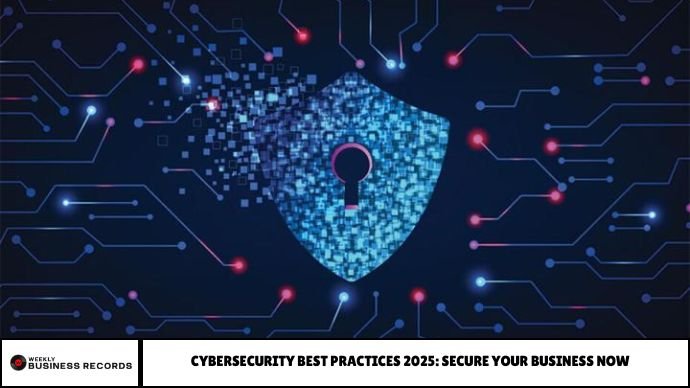Cybercrime is evolving at a staggering pace. Between 2024 and 2029, global cybercrime costs are projected to surge by over $6.4 trillion. As threats become more sophisticated, every member of an organization—from executives and IT teams to marketing and operations—must take responsibility for safeguarding sensitive data and systems.
Being proactive and staying updated on the latest cybersecurity defense strategies is essential. Doing so can help protect your business from damaging consequences such as financial loss, operational disruption, and reputational harm.
As technology evolves, so do the tactics of cybercriminals. In 2025, the digital threat landscape is more aggressive and complex than ever before. From ransomware attacks to deepfake-based fraud and AI-powered phishing, the risks to businesses—large and small—are growing rapidly.
According to recent industry reports, global cybercrime costs are projected to hit $10.5 trillion annually by 2025. Meanwhile, 60% of small businesses that experience a significant breach close within six months. These numbers are alarming, but the good news is that most attacks can be prevented with the right security strategies.
9 essential cybersecurity best practices every business should implement in 2025. Whether you’re managing a startup or overseeing a global enterprise, these tips will help you secure your operations, protect your data, and ensure your business remains resilient in a high-risk digital world.
Abstract
Cybersecurity in 2025 demands proactive defense strategies. This article highlights 9 critical cybersecurity best practices, including multi-factor authentication, employee training, endpoint protection, and incident response planning. Designed for modern businesses, these practices reduce threats and strengthen resilience in a volatile digital landscape.
1. Enforce Multi-Factor Authentication (MFA)
MFA remains one of the most effective defenses against unauthorized access. Passwords alone are no longer enough—especially with data breaches becoming more frequent.
- Require a second verification method (app, SMS, or biometrics)
- Apply MFA to email, cloud services, and sensitive platforms
This small change can block over 99% of automated cyberattacks.
2. Educate and Train Employees Regularly
Human error remains the leading cause of data breaches. In 2025, cybercriminals use more sophisticated phishing emails and social engineering tactics to deceive employees.
- Offer mandatory quarterly training sessions
- Use simulated phishing tests to reinforce awareness
- Encourage a “security-first” culture
Well-informed staff are your first line of defense.
3. Keep All Software and Systems Updated
Outdated software creates vulnerabilities. Cybercriminals often exploit known bugs in old versions.
- Enable automatic updates where possible
- Regularly patch operating systems, browsers, and plugins
- Maintain a detailed inventory of all digital assets
Timely updates help close security gaps before attackers find them.
4. Secure Endpoint Devices
With hybrid and remote work common in 2025, devices such as laptops, smartphones, and tablets become key targets.
- Install antivirus and endpoint detection solutions
- Use encryption on all company devices
- Enforce mobile device management (MDM) policies
Every endpoint is a potential entry point—protect each one.
5. Conduct Regular Risk Assessments
Understanding your cybersecurity risks is critical for making smart investments in defense.
- Identify your most valuable digital assets
- Evaluate current threats and vulnerabilities
- Prioritize areas with the highest exposure
Use assessments to continuously refine your security strategy.
6. Implement Network Segmentation
Instead of having one large, open network, segment your systems to limit the spread of breaches.
- Isolate sensitive data and departments (e.g., finance)
- Restrict access using role-based permissions
- Monitor internal traffic for unusual activity
Segmentation makes it harder for attackers to move laterally once inside.
7. Establish an Incident Response Plan
Preparation is key to minimizing damage when an incident occurs.
- Create a clear, documented response procedure
- Assign roles and responsibilities
- Conduct simulated cyberattack drills
Fast action can reduce financial losses and operational downtime.
8. Backup Data Frequently and Securely
Ransomware attacks are still on the rise. Having secure, frequent backups means you can recover data without paying a ransom.
- Automate daily backups
- Store backups offsite or in secure cloud environments
- Test data restoration regularly
Backup is your safety net when all else fails.
9. Monitor Systems 24/7 with Threat Detection Tools
Cyberattacks don’t follow a 9–5 schedule. Invest in tools that offer real-time threat detection and alerting.
- Use Security Information and Event Management (SIEM)
- Monitor unusual login attempts, file changes, and traffic spikes
- Leverage AI for faster response to complex threats
Real-time monitoring gives you early warning signs of an attack.
Conclusion
Cybersecurity is no longer just a technical issue—it’s a core business function. As threats continue to grow in sophistication and scale, companies must move from reactive to proactive security postures.
By adopting these 9 cybersecurity best practices, businesses can significantly reduce risk, safeguard their reputation, and ensure long-term resilience. The cost of prevention is far lower than the cost of a breach—especially in 2025’s digital-first economy.
Start securing your organization today—your data, clients, and future depend on it.
FAQs
1. What is the biggest cybersecurity risk in 2025?
Social engineering and phishing remain top threats due to human error, but AI-powered attacks are growing rapidly.
2. Is cybersecurity necessary for small businesses?
Absolutely. Small businesses are often targeted due to weaker defenses, and breaches can be devastating.
3. How often should cybersecurity training be done?
Ideally every quarter. Frequent, up-to-date training keeps employees alert and informed about new threats.
4. What are the most important tools for cybersecurity?
MFA, antivirus software, endpoint protection, SIEM tools, and backup solutions are essential.
5. Can remote work increase cybersecurity risks?
Yes. Remote and hybrid setups increase attack surfaces, making strong endpoint and access control vital.
6. What is zero trust in cybersecurity?
Zero Trust assumes no user or device is automatically trusted, requiring continuous authentication and monitoring.


